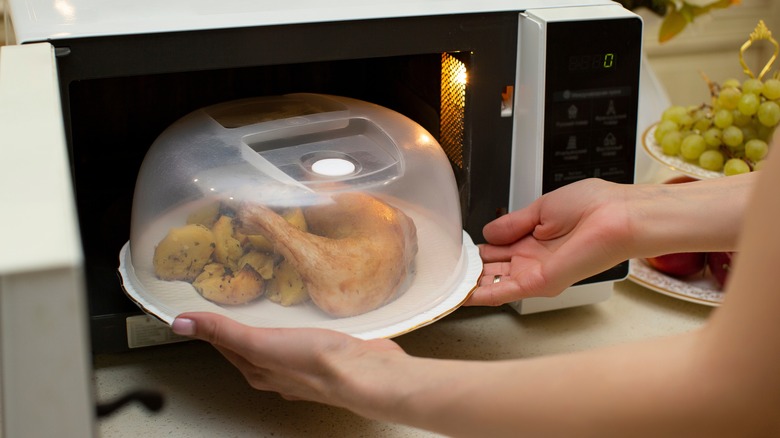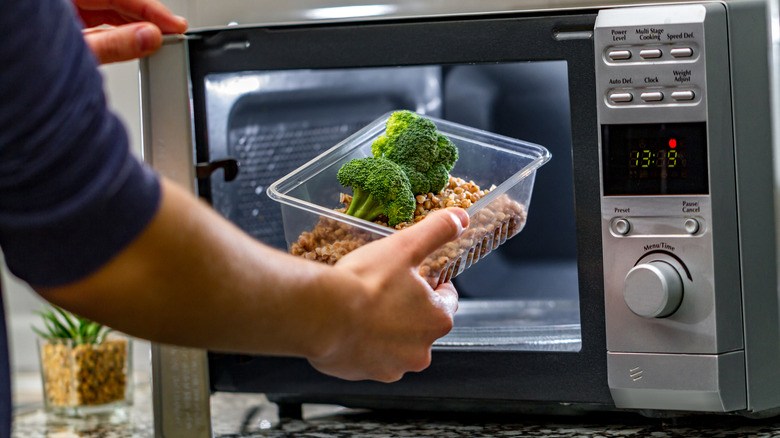You Should Second Guess 'Microwave Safe' Labels Before Heating Food
When we're trying to decide if it's safe to reheat our takeout in the plastic container it came in, we often search for a label that indicates if it's microwave safe. This can look like an image with wavy lines, the numbers "05" and the letters "PP" (meaning polypropylene), or simply the words "microwave safe." But before you put all your trust in these labels, it's a good idea to understand what they really mean.
There is no universal definition or federally regulated standard for the term "microwave safe," but it can mean that the container won't break down, warp, or damage the microwave. Especially if a container is plastic, it can also mean that it won't leak harmful chemicals into your food and it shouldn't become so hot that it burns your hand upon removal. However, since there is no formal testing process required to determine if an item is microwave safe and these results aren't guaranteed, it may be beneficial to proceed with caution when using certain materials.
Microwave safe containers may still have negative effects
The U.S. Food and Drug Administration (FDA) explains that "glass, paper, ceramic, and plastic containers are used in microwave cooking because microwaves pass through these materials," and indicates that people should refer to their microwave's instructions to determine which type of containers they should use. It also says to use "microwave safe cookware specifically manufactured for use in the microwave oven."
But when it comes to ceramics, plastic, or paper, it may be difficult to tell from the onset if something is truly safe for the microwave. The paint on some ceramics may absorb microwaves quickly, even if the dish is labeled microwave safe, making it scalding hot when you go to touch it. And although the label ideally means harmful chemicals from plastic won't leak into your food, in some cases, all it means is that the container won't melt or react with food or liquid. In fact, some say there is no such thing as microwave safe plastic, since heating the material releases microplastics and potentially toxic chemicals.
Even paper containers can have their issues, since they may be held together with glue or other sealants that can break down in the microwave. When in doubt, test your container before you give it the green light by nuking it with water for one minute — if it's cool to the touch, you should be good to go.

